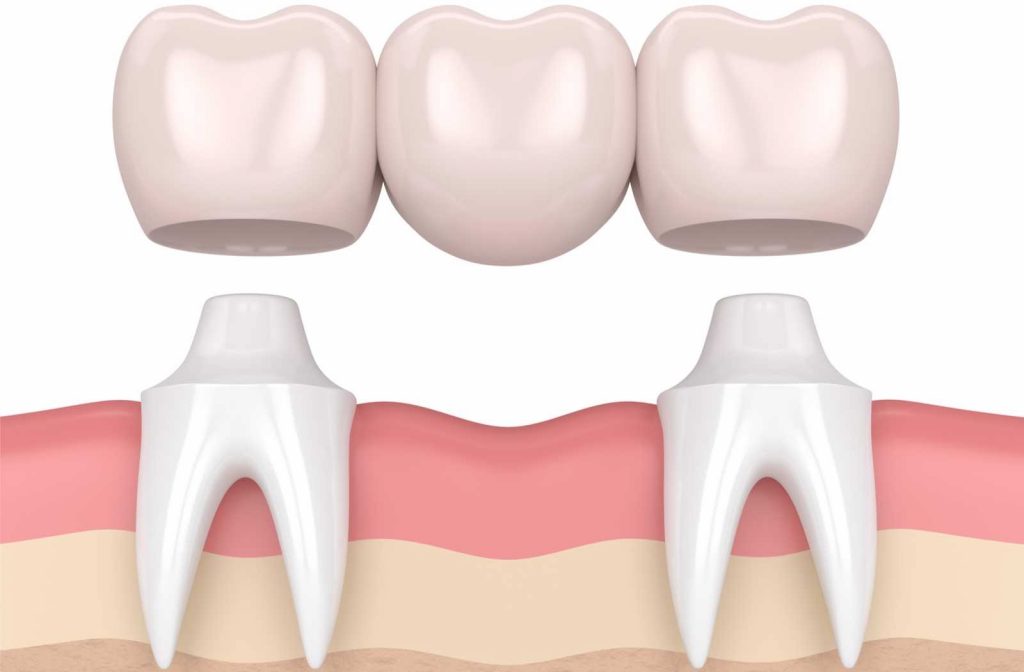You’ve undoubtedly crossed a bridge at least once in your life, but you might not have thought much about its purpose at the time. A bridge is a functional way to close the gap between one point and another. A dental bridge serves much the same purpose in your mouth: it literally “bridges” the gap created by one or more missing teeth.
That’s a good thing because missing teeth can cause surrounding teeth to shift, which may change your bite or make your jaw sore. Shifting teeth create new places for dental plaque to hide, increasing your chances of needing a tooth filling or gum disease treatment.
Dental bridges serve an aesthetic purpose, allowing you to show off your beautiful smile without shame or fear that your missing tooth is what people will remember. They help your wallet, too, because dental bridges cost less than other methods of tooth replacement.A Lesson in the Basics of Dental Bridges
Unlike removable devices such as dentures, dental bridge work is cemented onto natural teeth or dental implants on either side of a missing tooth. These anchor teeth are called abutments. The replacement tooth — called a pontic — is attached to a dental crown on each abutment. There are three main types of dental bridges:
Traditional Bridge — This is the most common type of bridge and is made of porcelain or porcelain fused to metal.
Cantilever Bridge — The cantilever bridge supports the replacement tooth from just one side. It is most often used when abutment teeth are located on only one side of the missing tooth or in areas of the mouth that are under less stress.
Maryland Bonded Bridge — Also known as a resin-bonded bridge, this type is generally only used in the front of the mouth where the biting force is less strong. It consists of a false tooth fused to metal bands and bonded to abutment teeth with resin.
Replacement teeth for can be made of several materials, including gold, alloys, porcelain or a combination of these. Some types of dental bridges cost more than others. You and your dentist can decide which dental bridge work is best for you based on the placement, function, look and expense of the replacement tooth.The Dental Bridge Procedure
A minimum of two dental visits are required to complete dental bridge work. During the first visit, your dentist may need to file down the abutment teeth so that the dental crown will fit over each leaving enough room in between for the replacement tooth. The second step in the dental bridge procedure is for your dentist to take an impression. This gives a laboratory an exact mold to use when creating your bridge. Your dentist will make a temporary bridge to protect the exposed teeth and gums while the permanent version is being made.
To complete the dental bridge procedure, you’ll need to return for a second appointment. Your dentist will remove your temporary and the new permanent bridge will be put in place. Placement usually involves some adjustments to get the fit just right.Make a Lasting Impression
A bridge can last more than 10 years, especially if you practice good oral hygiene. Remember: Dental bridge work requires healthy surrounding teeth and gums to stay in place. To keep your teeth healthy, brush twice a day and floss daily. Regular dental visits and dental cleanings are recommended twice a year.
If you have one or more missing teeth, a dental bridge procedure might be the right dental treatment for you. Talk to a dentist to find out. And if you’re concerned about how much dental bridges cost, ask your dentist.

